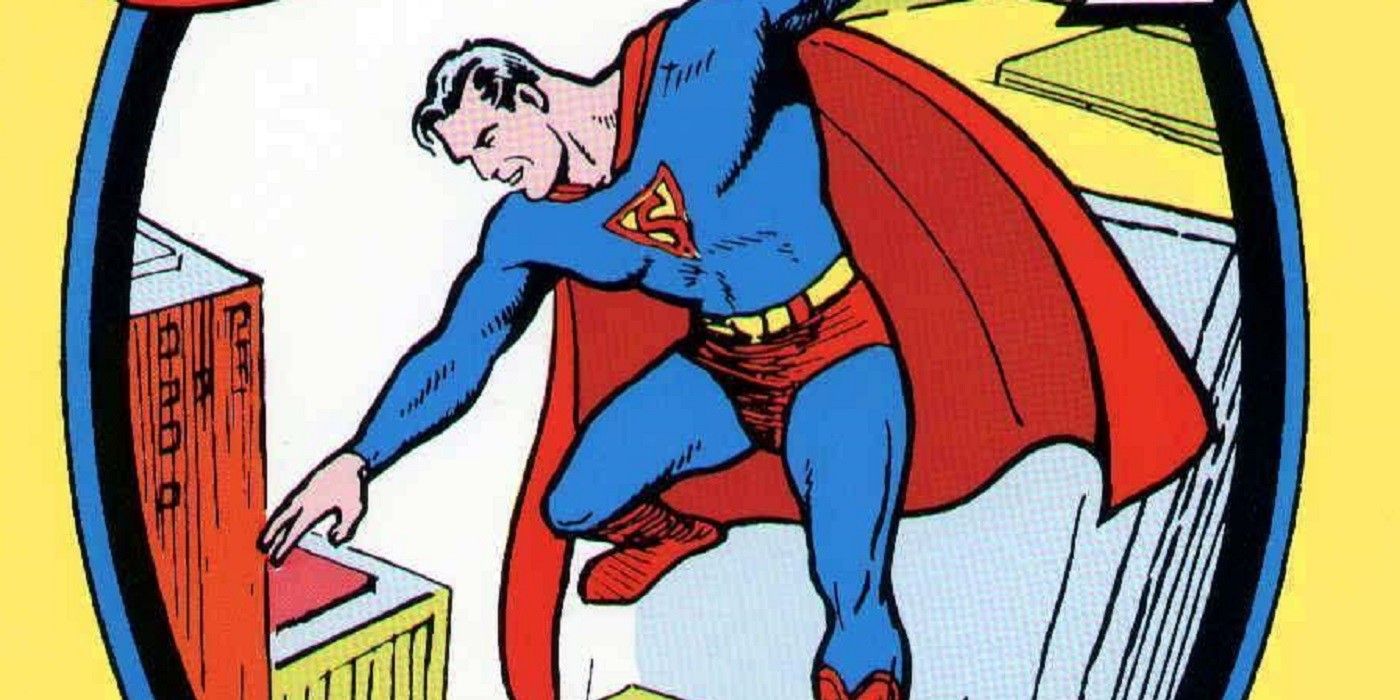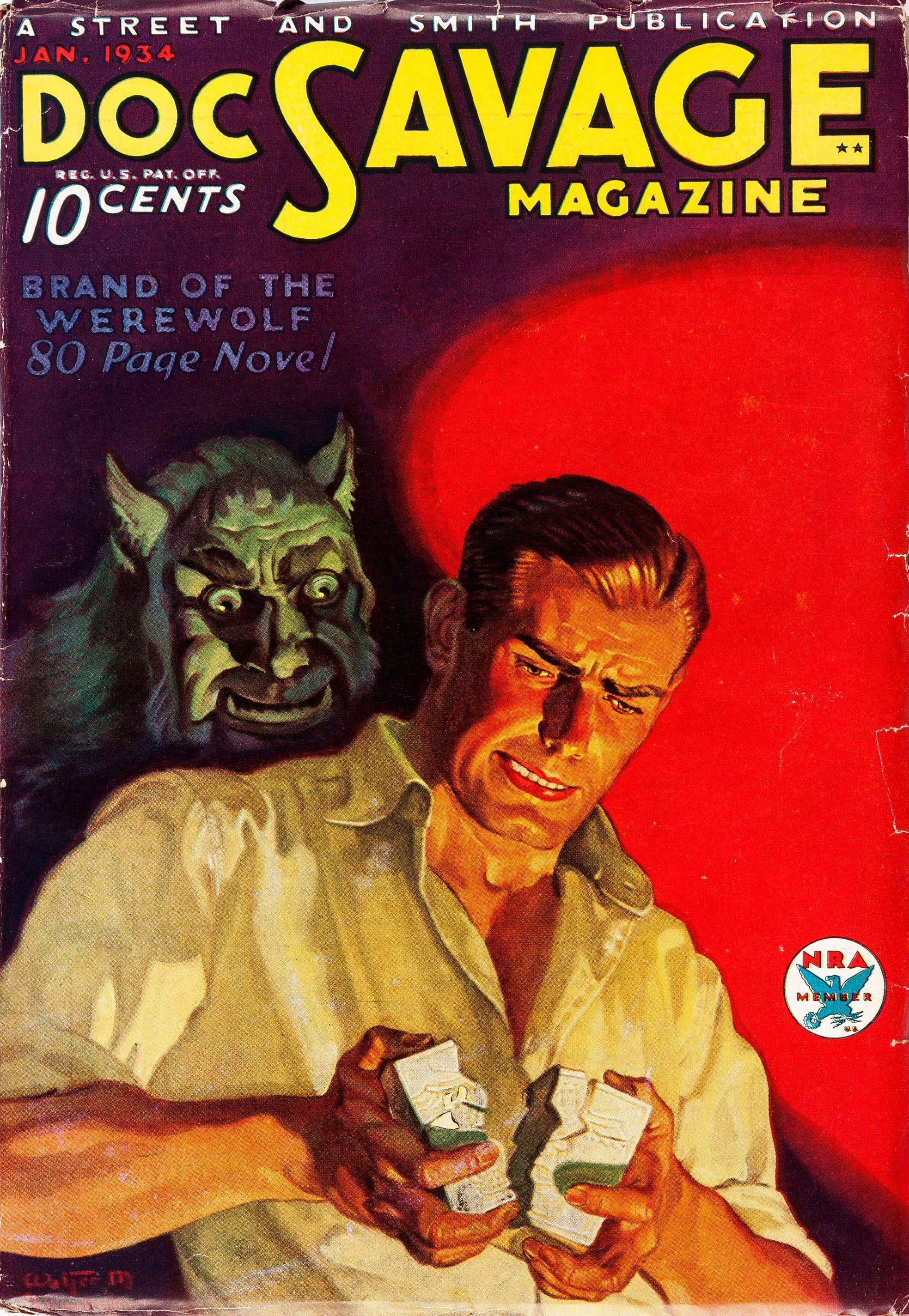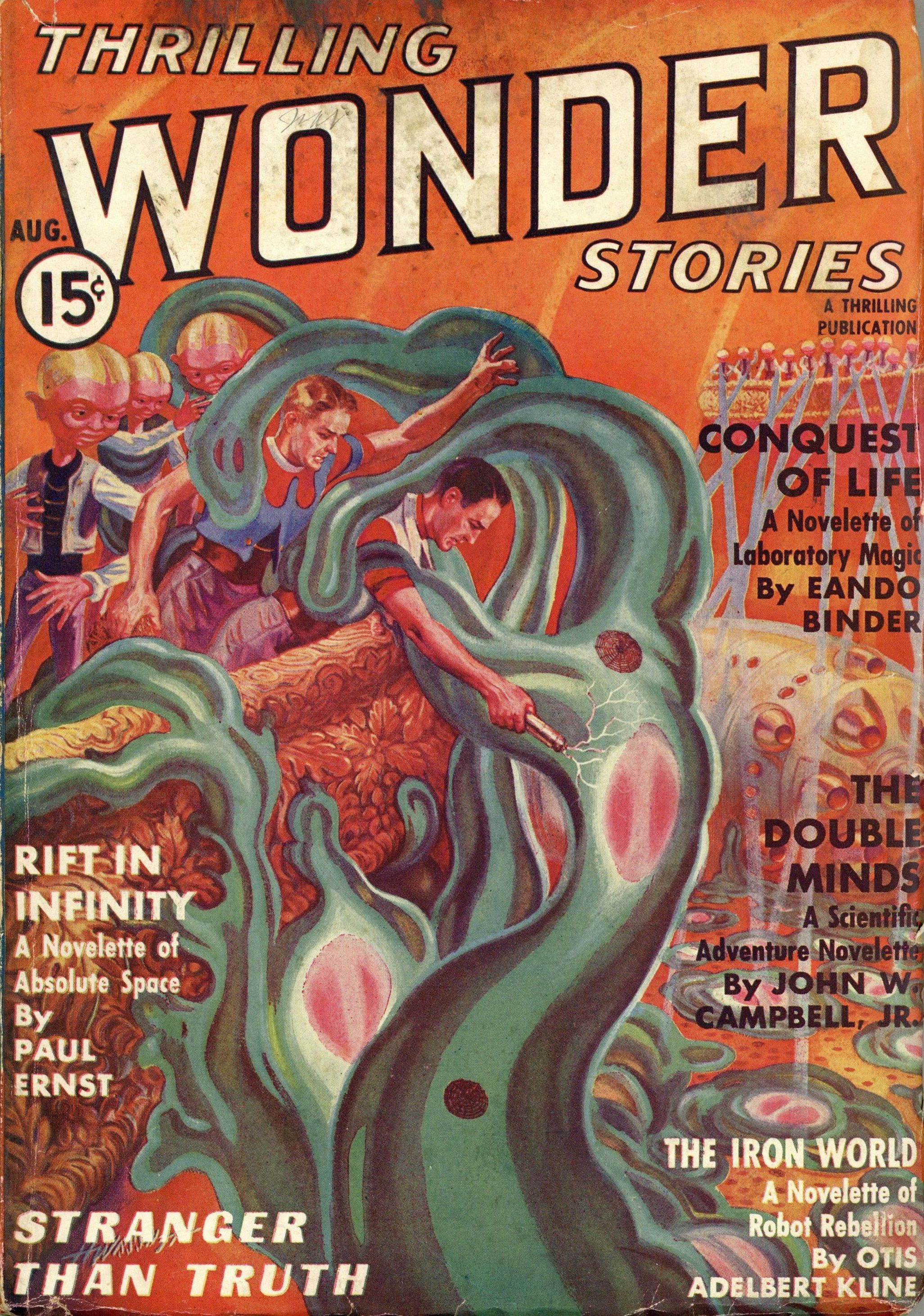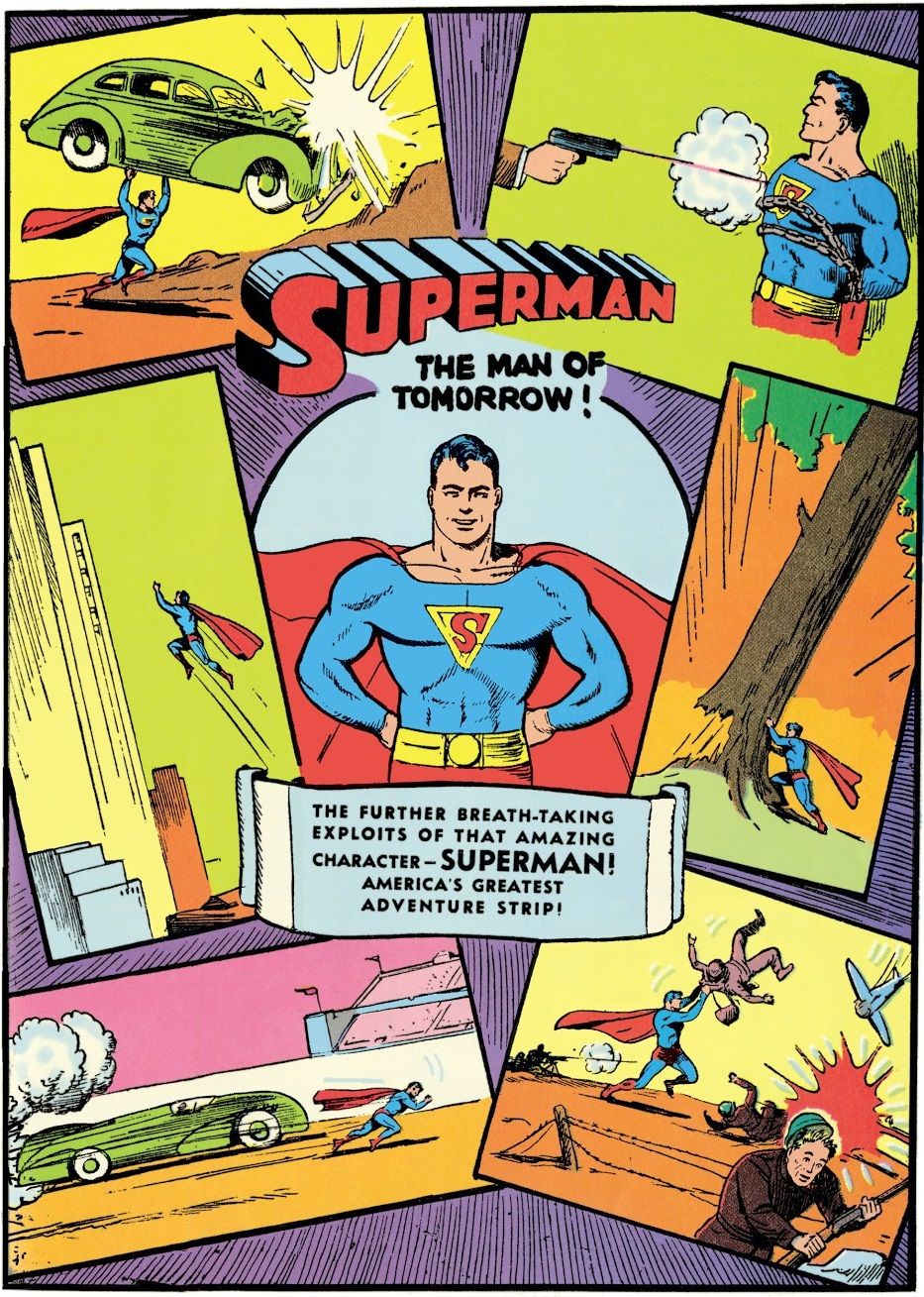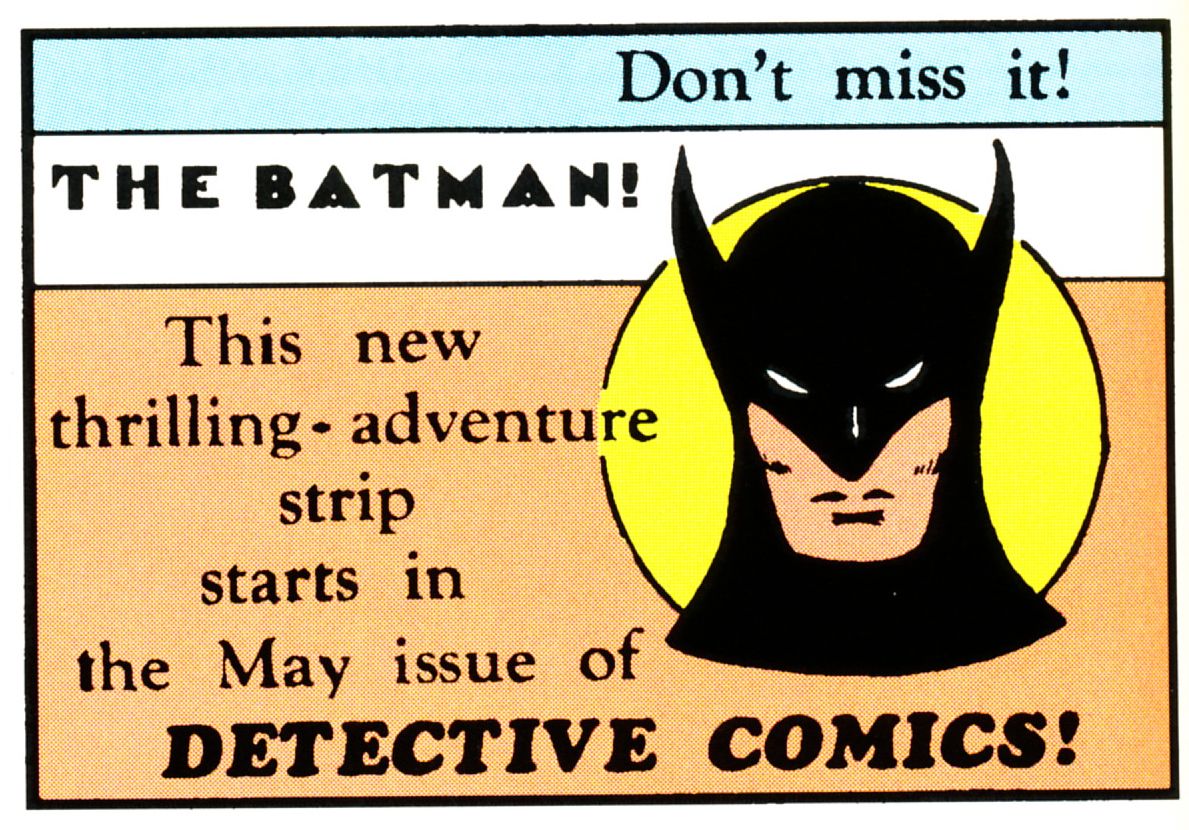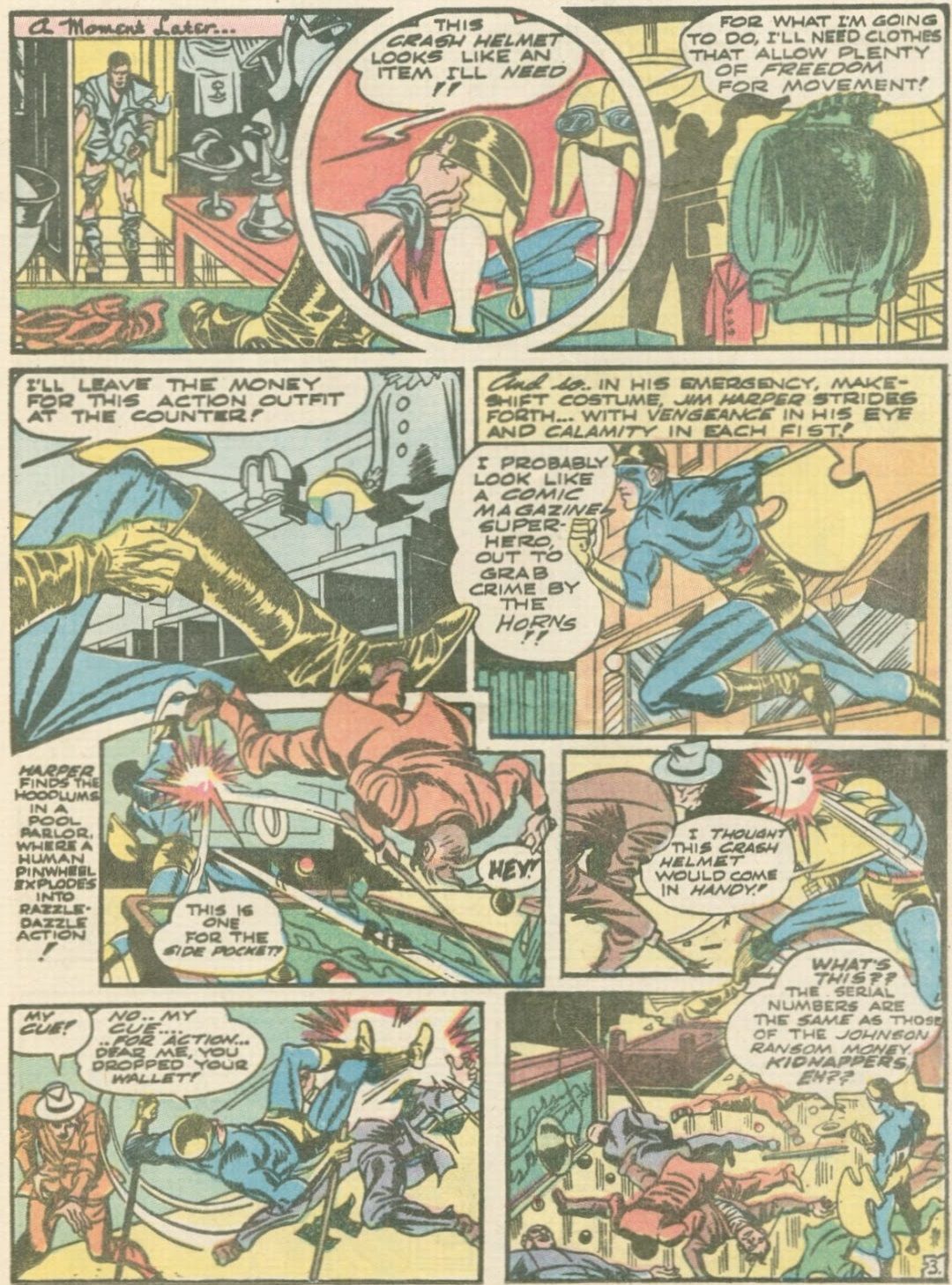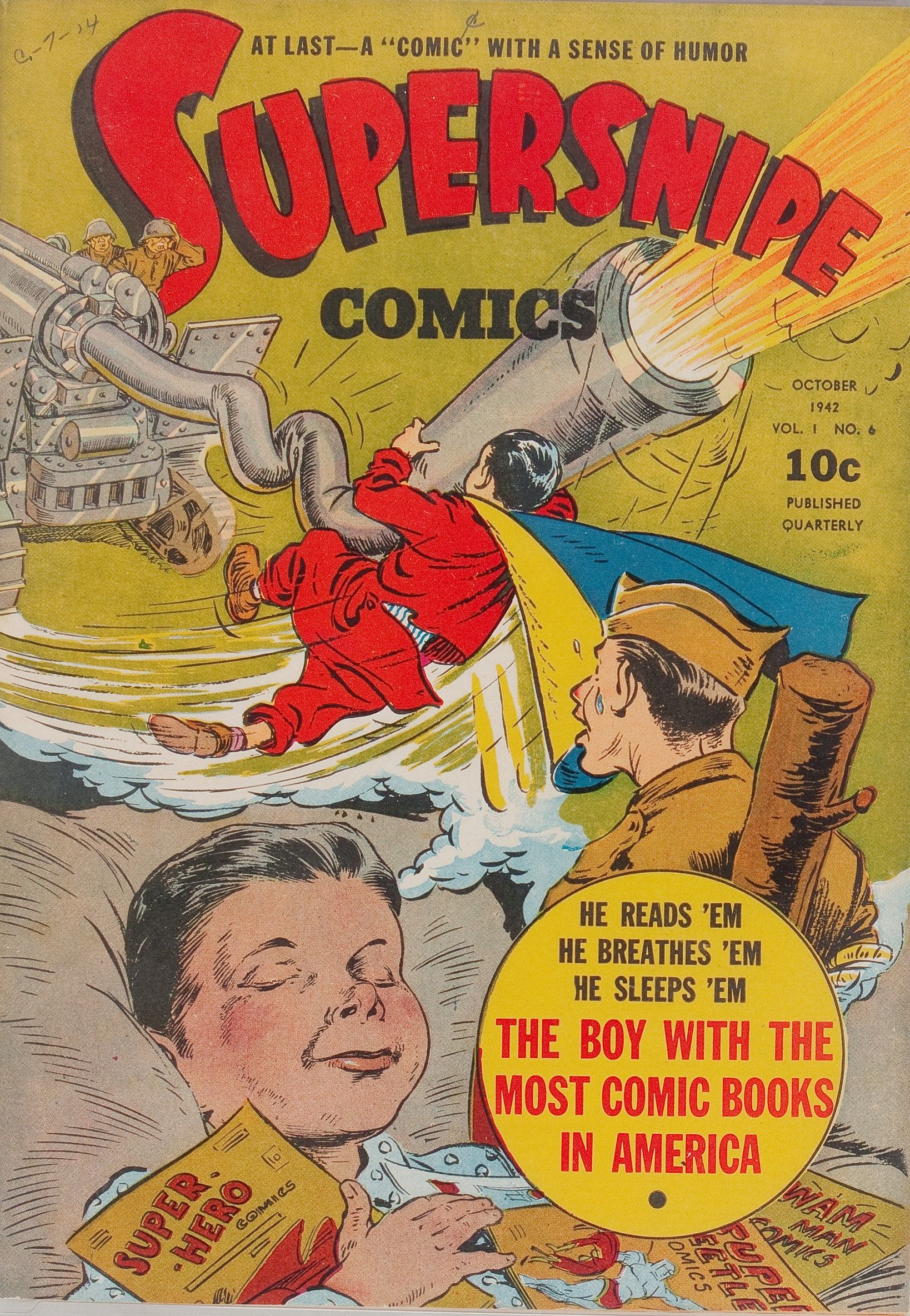In "When We First Met", we spotlight the various characters, phrases, objects or events that eventually became notable parts of comic lore, like the first time someone said, "Avengers Assemble!" or the first appearance of Batman's giant penny or the first appearance of Alfred Pennyworth or the first time Spider-Man's face was shown half-Spidey/half-Peter. Stuff like that.Keith on Twitter asked the following question about when "superhero" was first used to refer to comic book characters.
My "friend" Martin Gray then volunteered me to answer this question (I kid, Martin, you know I love this stuff, even if it ends up eating up hours of research time), so, well, here it is!
First off, the term "superhero" dates back to at least 1917, and it was occasionally used in newspapers to describe someone doing something above and beyond. You know what the sort of things I'm talking about, like a boy scout saving someone from getting hit by a car or whatever.
However, the first time that it was used in the modern sense of the word was in an advertisement for the Doc Savage radio serial (thanks to Peter Coogan and his excellent book, Superhero: The Secret Origin of a Genre, for the information).
Doc Savage, like other pulp fiction heroes such as the Shadow and John Carter of Mars, was a major influence on comic book superheroes (as were comic strip heroes like The Phantom and Mandrake the Magician). However, the term "superhero" was a one off. More typically, Doc Savage was known as "The Man of Bronze" as his description...
Okay, a few years later, the Pulp Fiction magazine, Thrilling Wonder Stories, had a feature in it called Zarnak (which is an interesting feature in and of itself, which I'll write about in my Comic Book Legends Revealed column in the future)...
In the August 1937 issue of the magazine, someone wrote in to complain about the Zarnak feature, noting that "I must agree with others that it is rapidly degenerating into the juvenile antics of a musclebound superhero. This latter sort of stuff may be all right in the Sunday comics but it is decidedly out of place in a respectable science fiction magazine."
OUCH.
Anyways, less than a year after that pulp fiction magazine issue, Superman made his debut in Action Comics #1. Here's the thing, though, there was a clear genre in comics at the time called "adventure." The comic book company that published Action Comics even had another comic book series called New Adventure Comics (that was changed to just Adventure Comics a few months after Action Comics debuted). That company also had a comic book called Detective Comics and another comic book called More Fun Comics. So basically, the idea at the time was that comic books basically had three genres - crime, comedy and adventure. Superman was an adventure strip, he was just clearly a superhuman adventure character.
You can see this in 1939's Superman #2, where Superman is specifically referenced as an adventure character, not a superhero...
Now, clearly, Superman's booming success quickly led to not only a boom in comic books (as the company that would become DC Comics was selling TONS of copies of Action Comics and its follow-up, Superman) but a specific boom in characters like Superman. National themselves soon debuted Batman, who was ALSO a big hit (and, naturally, Batman was promoted as an adventure strip....
)
But here's the thing, Superman was, well, you know, Superman. He was his own thing. Fox Comics launched a ripoff of Superman called Wonderman that was sued by National and thus only appeared in a single issue. National was very protective of their character, and so why would anyone want to mess with them by trying to call THEIR character a superhero?
It just wasn't a thing. The public knew what superheroes were, they were the people with superpowers and costumes, they didn't need an actual term for them to understand what they were. However, over time, it got kind of amusing to see what terms people WOULD come up with to describe these characters. When they were on their own, it was easy to avoid referring to them as any sort of specific term, as Superman was Superman, Batman was Batman, the Flash was the Flash, etc. (and they each had their own specific nicknames, like "The Man of Steel" or "The Dark Knight" or "The Fastest Man Alive).
However, when the Justice Society of America put these heroes on a team together, they had to come up with ways to describe each other, but they were called "champions of right and justice," "Justice Men" and "Mystery Men." That last one got kind of popular as a term in that era.
So, what changed?
The first usage of it in a comic book was in late 1941's Star Spangled Comics #7, when Joe Simon and Jack Kirby introduced the Guardian and the Newsboy Legion, as Jim Harper becomes the Guardian and he comments that his costume looks like a costumed "Super hero"...
An even more definitive example occurred a few months later.
The always informative Tom Brevoort wrote about the character Supersnipe, who debuted in 1942, on his comic book history blog here (click there to see some sample pages from Supersnipe's first appearance):
Among the mostly-forgotten series of the Golden Age of Comics, there are a few which self-reflexively turned their gaze on the comic book industry itself, and what effect it might be having on its youthful readers. Perhaps the best-remembered of these was Supersnipe, a character who made his debut in Volume 2 #3 of Street & Smith’s SHADOW COMICS (which was primarily devoted to stories of the pulp crimefighter) before eventually headlining a series of his own. Supersnipe was a pretty charming feature overall.
While all of the particulars hadn’t been worked out for this first installment, Supersnipe was really young Koppy McFad, the boy with the most comic books in America. Koppy would routinely alternate between daydreaming about his fantastical adventures as Supersnipe and swiping his father’s lodge cape and long-johns to prowl the streets of his small town, looking for adventure.
Supersnipe’s creator George Marcoux reportedly got the idea for the character on the street one day: he spied a child with a homemade cape tied around his neck racing through the streets on his bicycle. A woman almost collided with the cyclist, and called out, “Guttersnipe!†Marcoux reportedly corrected the woman: “No, ma’am. That’s Supersnipe!†And the series was born.
Supersnipe soon got his own series in mid-1942 and on the very first issue of his solo series, we see that the young hero has fallen asleep reading "Super-hero" comic books...
Thanks for the question, Keith, and thanks for the volunteering, Martin!
If anyone else has a suggestion for/question about a notable comic book first, drop me a line at brianc@cbr.com!

